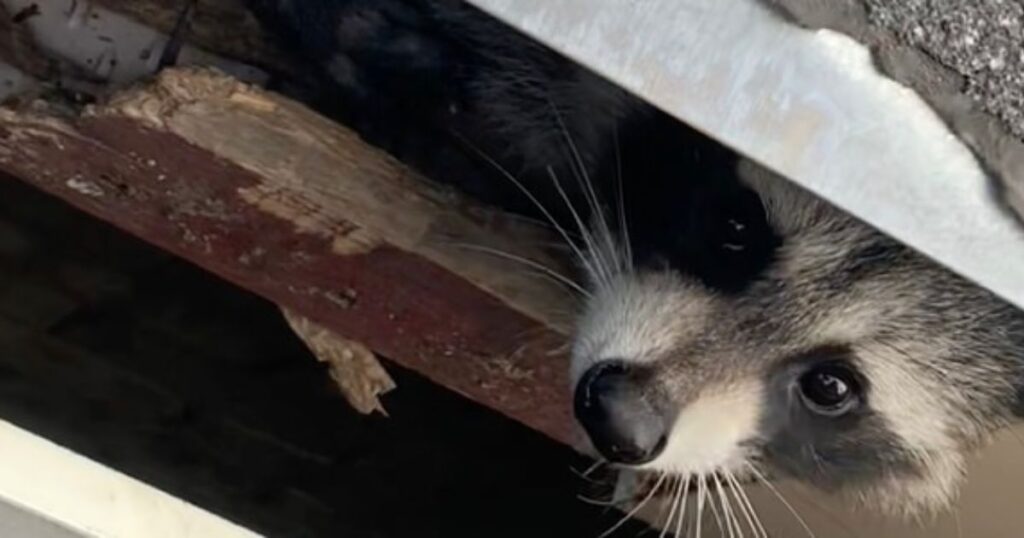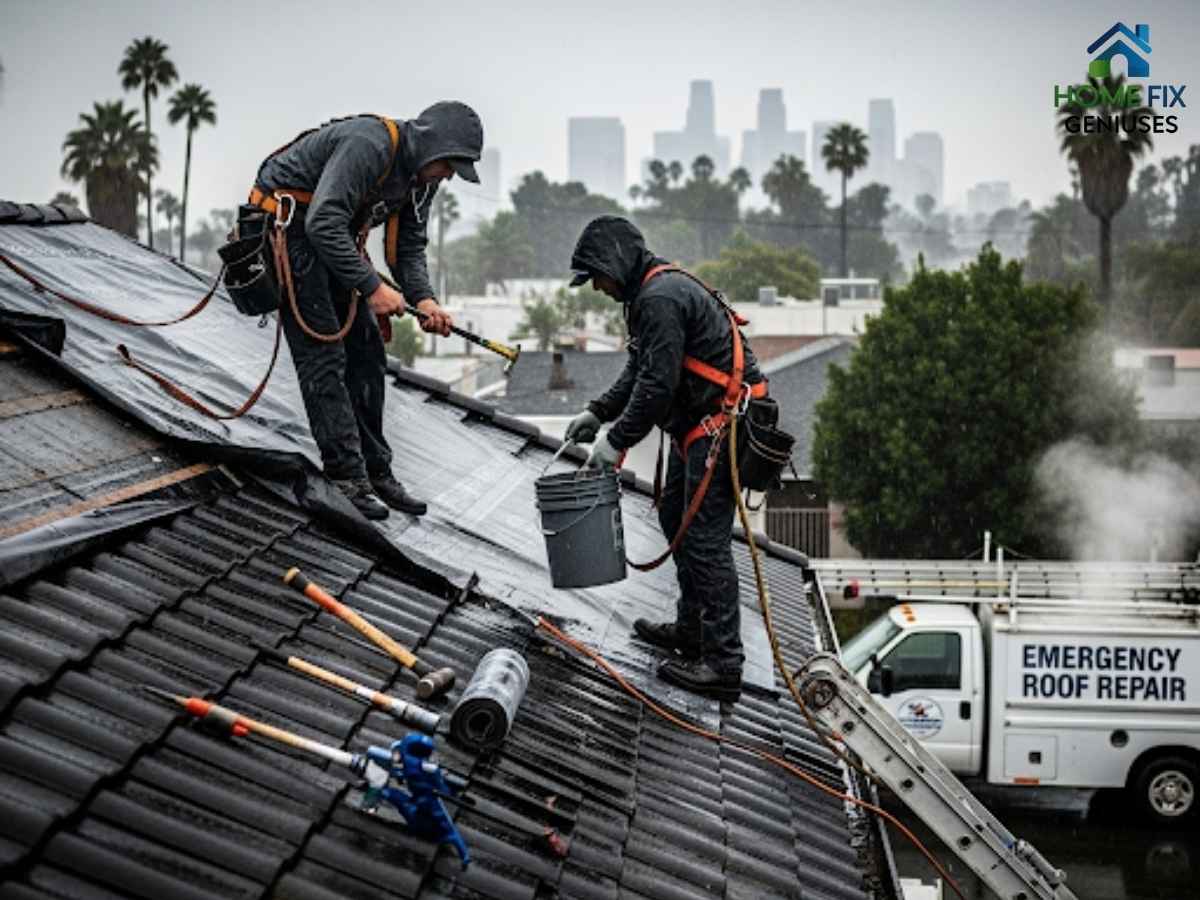Picture this: you’re enjoying a peaceful evening in your Beverly Hills backyard when you hear scratching sounds coming from your attic. What starts as minor curiosity quickly turns to concern when you discover a family of raccoons has moved in, complete with babies and months’ worth of accumulated droppings. Suddenly, your dream home has become a wildlife sanctuary—but not by choice.
Wildlife removal Los Angeles services have become essential for homeowners throughout the metropolitan area as urban development continues expanding into natural habitats. From the Hollywood Hills to Pasadena neighborhoods, encounters with raccoons, skunks, armadillos, and other wildlife require professional intervention to protect both property and family safety.
Los Angeles’ Unique Wildlife Challenges
Urban-Wildlife Interface Creates Complex Situations
Los Angeles sits at the convergence of diverse ecosystems, from coastal plains to mountain ranges, creating perfect conditions for human-wildlife conflicts. The Santa Monica Mountains, Angeles National Forest, and countless urban canyons provide habitat corridors that channel wildlife directly into residential neighborhoods.
Climate and Geography Foster Year-Round Activity
Recent studies by the National Park Service document over 15 mammal species actively living within Los Angeles County’s urban areas. These animals adapt remarkably well to city life, with raccoons learning to open garbage cans, skunks denning under porches, and even armadillos establishing populations in certain neighborhoods.
Los Angeles’ Mediterranean climate eliminates the natural population controls that harsh winters provide in other regions. Average temperatures ranging from 57°F to 84°F mean wildlife remains active throughout the year, leading to continuous breeding cycles and expanding populations.
The region’s topography compounds these challenges. Properties built against hillsides in areas like Bel Air and Pacific Palisades experience regular wildlife incursions as animals follow natural travel routes that predate human development. Recent construction activities have displaced many animals, forcing them to seek new territories in established neighborhoods.
Common Wildlife Species Requiring Professional Removal
Raccoons: Los Angeles’ Most Persistent Problem
Raccoons represent the most frequent wildlife removal challenge throughout Los Angeles County. These intelligent, adaptable mammals possess human-like hands that enable them to open containers, manipulate door handles, and access seemingly secure areas. Adult raccoons weigh 15-25 pounds and can cause extensive property damage through their exploratory behavior.
Raccoon populations in Los Angeles have exploded due to abundant food sources and lack of natural predators. They commonly establish dens in attics, crawl spaces, and wall voids, where females give birth to 2-5 kits annually. These prolific breeders can quickly establish multi-generational colonies that become increasingly difficult to eliminate without professional intervention.
Striped Skunks: Defensive Challenges
Striped skunks throughout Los Angeles create unique removal challenges due to their defensive spray capabilities. These nocturnal animals typically weigh 6-14 pounds and prefer denning under structures like porches, decks, and sheds. Skunk removal requires specialized techniques to prevent spray incidents that can contaminate properties for months.
Los Angeles skunk populations thrive in suburban environments where they find abundant insect prey, pet food, and secure denning sites. Female skunks produce 4-7 kits annually, typically establishing dens close to reliable food sources. Professional removal becomes essential when skunks take residence near homes, as their presence attracts additional wildlife and creates ongoing odor concerns.
Armadillos: Expanding Range in Southern California
While not traditionally associated with Los Angeles, armadillo populations have been expanding northward from their established ranges. These armored mammals create extensive burrow systems that can damage landscaping, foundations, and irrigation systems. Nine-banded armadillos typically weigh 8-17 pounds and can dig burrows up to 6 feet deep.
Armadillo removal requires understanding their burrowing behaviors and travel patterns. These animals are primarily nocturnal and follow established routes between feeding areas and dens. Professional services use this predictable behavior to establish effective trapping programs that safely remove entire family groups.
Success Stories from Los Angeles Neighborhoods
Hollywood Hills Raccoon Family Relocation
The Morrison family’s Laurel Canyon home experienced a complex raccoon situation when a female with three juveniles established residence in their attic space. Initial DIY attempts only resulted in the raccoons becoming more defensive and causing additional damage to insulation and ductwork.
Professional wildlife removal specialists implemented a humane exclusion program involving one-way doors that allowed the raccoons to exit but prevented re-entry. The family group was safely relocated to appropriate habitat in the Angeles National Forest, and exclusion work prevented future invasions. Six months later, the property remains raccoon-free with no recurring issues.
Pasadena Skunk Colony Management
A multi-unit property near the Rose Bowl discovered an established skunk colony under their main building when tenants began complaining about persistent odors. Investigation revealed a mother skunk with six juveniles had been living beneath the structure for several months.
Careful planning and specialized equipment enabled complete removal without spray incidents. The removal process involved temporary barriers, humane trapping, and immediate relocation to suitable habitat in the Arroyo Seco. Property modifications eliminated future denning opportunities while maintaining the building’s structural integrity and aesthetic appeal.
Silver Lake Armadillo Damage Control
A historic Silver Lake property experienced extensive landscape damage from armadillo burrowing activities that threatened the foundation of their 1920s bungalow. The homeowners initially thought they had a gopher problem until professional inspection revealed characteristic armadillo sign including distinctive tracks and burrow patterns.
Live trapping and relocation services successfully removed two adult armadillos while habitat modification eliminated the attractants that drew them to the property. Landscape restoration included specialized barriers that prevent future burrowing damage while maintaining the property’s distinctive California landscaping character.
Los Angeles’ Leading Wildlife Removal Specialists
Animal Capture Wildlife Control
Operating throughout Los Angeles County for over 15 years, Animal Capture Wildlife Control specializes in humane wildlife removal with comprehensive decontamination services. Their licensed professionals handle raccoons, skunks, opossums, and other urban wildlife using ethical trapping methods. The company provides 24/7 emergency services and maintains California Department of Fish and Wildlife licensing with full bonding and insurance.
Website: www.animalcapturewildlifecontrol.com
All City Animal Trapping
Serving Los Angeles, Orange, Riverside, and San Bernardino Counties for over 20 years, All City Animal Trapping offers comprehensive wildlife control services for residential and commercial properties. Their experienced team specializes in damage repair, preventive exclusion, and long-term wildlife management solutions. All technicians maintain current licensing and utilize humane removal methods approved by state wildlife agencies.
Website: www.allcityanimaltrapping.com
Traction Wildlife and Pest Control
Licensed wildlife removal specialists serving the San Fernando Valley and West Los Angeles areas with over 10,000 successful wildlife projects. Their certified professionals provide emergency response services, structural repairs, and ongoing monitoring programs. The company maintains California Department of Fish and Wildlife licensing and specializes in complex multi-species removal situations.
Website: www.tractionwildlifeandpest.com

Legal Requirements and Permits
California Department of Fish and Wildlife Regulations
Wildlife removal in Los Angeles requires strict adherence to California Fish and Game Code regulations. Professional services must maintain current trapping licenses and follow specific protocols for different species. The California Department of Fish and Wildlife (wildlife.ca.gov) provides comprehensive licensing information and regulatory updates that govern all wildlife management activities.
Homeowners attempting DIY wildlife removal may unknowingly violate state laws protecting certain species or regulating removal methods. Professional services ensure compliance with all applicable regulations while providing documentation required for insurance claims and property management companies.
Local Permit Requirements
Los Angeles County maintains additional regulations through the Department of Animal Care and Control that may apply to wildlife removal situations. Properties in unincorporated areas must comply with specific notification requirements, while municipalities may have additional ordinances governing wildlife management activities.
Professional wildlife removal companies navigate these complex regulatory requirements, obtaining necessary permits and maintaining compliance documentation. This regulatory expertise protects property owners from potential liability while ensuring humane treatment of wildlife populations.
Health and Safety Considerations
Disease Transmission Risks
Wildlife removal addresses serious health risks associated with zoonotic diseases transmitted between animals and humans. Raccoons commonly carry raccoon roundworm, leptospirosis, and rabies, while skunks can transmit rabies and various parasites. Recent studies in Los Angeles County documented significant leptospirosis prevalence in urban raccoon and skunk populations.
Professional removal services utilize appropriate personal protective equipment and follow strict decontamination protocols that protect both workers and property occupants. DIY removal attempts expose individuals to these health risks without proper safety measures or medical monitoring.
Structural Damage Prevention
Wildlife infestations cause extensive property damage through nesting activities, waste accumulation, and exploratory behavior. Raccoons commonly damage insulation, ductwork, and electrical systems, while skunks can undermine foundations through their burrowing activities. Prompt professional intervention prevents escalating damage costs.
Comprehensive wildlife removal includes damage assessment, immediate repairs, and long-term prevention strategies that protect property values. Professional services identify vulnerabilities that might attract future wildlife while implementing exclusion measures that maintain building integrity.
Integrated Management Strategies
Habitat Modification Approaches
Successful wildlife management extends beyond simple removal to address environmental factors that attract animals to residential properties. This includes securing food sources, eliminating water access, and modifying landscapes that provide cover or denning opportunities.
Professional services conduct comprehensive property assessments identifying attractants and recommending modifications that reduce wildlife pressure. These strategies prove more cost-effective than repeated removal services while creating sustainable solutions for long-term wildlife management.
Exclusion and Prevention Systems
Modern wildlife removal emphasizes preventive exclusion systems that deny access to structures while maintaining property aesthetics and functionality. These systems include specialized screening, one-way doors, and structural modifications tailored to specific wildlife species and property characteristics.
Professional installation ensures exclusion systems withstand weather conditions and wildlife pressure while meeting building codes and homeowner association requirements. Warranty programs provide ongoing protection and maintenance that extends system effectiveness over time.
Emergency Response and Seasonal Considerations
24/7 Emergency Services
Wildlife emergencies requiring immediate intervention include aggressive animal behavior, structural damage, or health risks to property occupants. Los Angeles wildlife removal companies maintain emergency response capabilities that address urgent situations outside normal business hours.
Emergency services prioritize human safety while implementing temporary containment measures that prevent situation escalation. Comprehensive follow-up services address underlying issues and implement permanent solutions that prevent recurrence.
Seasonal Wildlife Patterns
Los Angeles’ year-round wildlife activity requires understanding seasonal behavioral patterns that influence removal timing and strategies. Spring breeding seasons increase wildlife activity around residential properties, while fall dispersal periods bring juvenile animals seeking new territories.
Professional services adjust removal strategies based on seasonal factors, regulatory considerations, and species-specific behaviors. This expertise ensures optimal removal timing while minimizing stress to wildlife populations and maximizing long-term effectiveness.
Technology and Innovation in Wildlife Services
Advanced Monitoring Systems
Modern wildlife removal incorporates monitoring technology that tracks animal movement patterns and identifies optimal intervention strategies. Remote cameras, motion sensors, and GPS tracking provide detailed behavioral data that improves removal effectiveness while reducing property disruption.
These technological tools enable precision targeting that minimizes non-target impacts while ensuring complete family group removal. Documentation capabilities support insurance claims and provide valuable data for ongoing wildlife management programs.
Humane Capture Methods
Contemporary wildlife removal emphasizes humane capture methods that minimize animal stress while ensuring human safety. Advanced trap designs, one-way exclusion devices, and species-specific techniques provide effective results without causing unnecessary suffering.
Professional services invest in specialized equipment and ongoing training that maintains current best practices in humane wildlife management. These methods often prove more effective than traditional approaches while meeting public expectations for ethical animal treatment.
The complexity of wildlife removal in Los Angeles requires professional expertise that addresses regulatory compliance, safety considerations, and long-term effectiveness. Property owners who attempt DIY solutions often create more extensive problems while exposing themselves to legal liability and health risks.
Successful wildlife management combines immediate removal needs with comprehensive prevention strategies that protect properties from future invasions. Professional services provide this integrated approach while ensuring humane treatment of wildlife populations and compliance with all applicable regulations.
Don’t let wildlife problems compromise your property safety or peace of mind. Contact qualified wildlife removal specialists today to address current issues and implement prevention strategies that protect your Los Angeles property for years to come.
Frequently Asked Questions
What wildlife species commonly require professional removal in Los Angeles neighborhoods?
Los Angeles wildlife removal services most frequently handle raccoons, which represent approximately 60% of all removal calls due to their intelligence and adaptability to urban environments. Striped skunks account for about 25% of services, particularly during spring breeding seasons when they establish dens under structures. Opossums, ground squirrels, and bats comprise most remaining removal requests, while armadillos are increasingly encountered in certain neighborhoods. Coyote management requires specialized approaches due to California Department of Fish and Wildlife regulations protecting these native predators. Each species requires different removal strategies based on their behavior patterns, legal status, and public health considerations.
How much does professional wildlife removal cost in Los Angeles County?
Wildlife removal costs in Los Angeles vary significantly based on species, infestation size, and property complexity. Basic single-animal removal typically ranges from $200-500, while complex multi-animal situations can cost $800-2,500 depending on access difficulty and exclusion requirements. Raccoon family removal averages $600-1,200 including babies and cleanup, while skunk removal ranges from $300-800 with odor treatment. Comprehensive services including damage repair, decontamination, and exclusion work can exceed $3,000 for extensive infestations. Most companies provide free inspections and detailed estimates, with emergency services commanding 25-50% premium charges for after-hours response.
Do I need permits for wildlife removal on my Los Angeles property?
Professional wildlife removal companies handle all necessary permits and licensing requirements, as California Department of Fish and Wildlife regulations require specific credentials for trapping and relocating wildlife. Property owners cannot legally trap most wildlife species without proper licensing, and DIY removal may violate Fish and Game Code sections protecting native animals. Los Angeles County and municipal regulations may require additional permits for structural modifications or waste disposal associated with wildlife removal. Professional services maintain current licensing with the California Department of Fish and Wildlife, carry appropriate insurance, and ensure compliance with all local ordinances governing wildlife management activities
How quickly can wildlife removal services respond to emergency situations in Los Angeles?
Most established Los Angeles wildlife removal companies offer 24/7 emergency response with typical arrival times within 2-4 hours for urgent situations involving aggressive animals or immediate health risks. Same-day service is standard for most non-emergency calls, while complex removal situations requiring specialized equipment may need 24-48 hour scheduling. Emergency situations include animals in living spaces, aggressive behavior toward humans or pets, or structural damage threatening property safety. Response times vary by location, with services in central Los Angeles typically faster than remote areas like Malibu or the eastern San Fernando Valley. Most companies prioritize emergency calls and maintain on-call technicians for after-hours situations.
What should I do if I discover wildlife in my Los Angeles home before professional services arrive?
Immediately isolate the affected area by closing doors and removing pets and family members from the vicinity, as most wildlife will avoid humans and seek escape routes when left undisturbed. Never attempt to handle, feed, or corner wild animals, as this increases stress levels and potential for aggressive behavior or property damage. Document the situation with photos or video from a safe distance for insurance purposes and to help professionals assess the situation. Secure potential food sources including pet food, garbage, and birdseed that might attract additional animals. Contact professional wildlife removal services immediately, as prompt intervention prevents situation escalation and reduces property damage, health risks, and removal complexity.


